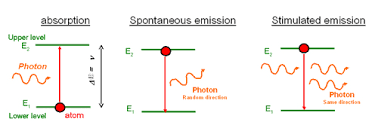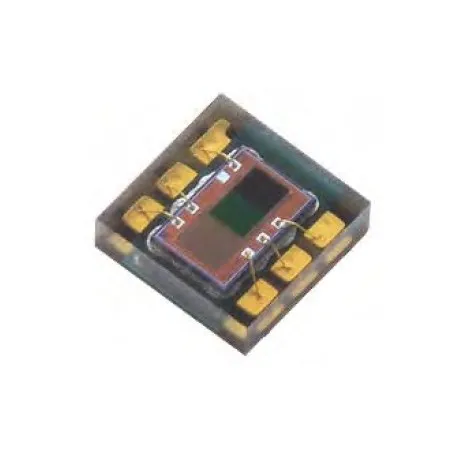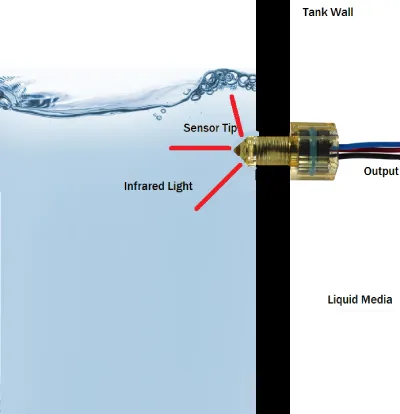What is Optical Sensor ? Overview and Applications
An optical sensor transforms light rays into an electronic signal. Its function is to measure the physical quantity of light and, depending on the sensor type, convert it into a form that can be read by an integrated measuring device. Optical sensors are employed for contact-less detection, counting, or positioning of parts. They can be either internal or external. External sensors capture and transmit the required amount of light, while internal sensors are primarily used to detect bends and other small directional changes.
Optical sensors can measure various parameters, including temperature, velocity, liquid level, pressure, displacement (position), vibrations, chemical species, force, radiation, pH value, strain, acoustic field, and electric field.

Types of Optical Sensors
There are various kinds of optical sensors commonly used in real-world applications, as detailed below.
- Photoconductive devices measure resistance by converting changes in incident light into changes in resistance.
- The photovoltaic cell (solar cell) converts the amount of incident light into an output voltage.
- Photodiodes convert the amount of incident light into an output current.
- Phototransistors are a type of bipolar transistor where the base-collector junction is exposed to light, resulting in behavior similar to a photodiode but with internal gain.
The operating principle of an optical sensor involves the transmission and reception of light. The object to be detected either reflects or interrupts a light beam emitted by a diode. Depending on the device type, the interruption or reflection of the light beam is evaluated. This allows for the detection of objects regardless of their material (wood, metal, plastic, or other). Special devices can even detect transparent objects or those with varying colors or contrasts. Different types of optical sensors are explained below.

Through-Beam Sensors
This system comprises two separate components: the transmitter and the receiver, which are positioned opposite each other. The transmitter projects a light beam onto the receiver. When the light beam is interrupted, the receiver interprets it as a switch signal. The location of the interruption does not affect the signal interpretation.

Advantage: Large operating distances can be achieved, and recognition is independent of the object's surface structure, color, or reflectivity.
To ensure high operational dependability, it must be confirmed that the object is sufficiently large to completely interrupt the light beam.
Retro-Reflective Sensors
The transmitter and receiver are housed together, and a reflector directs the emitted light beam back to the receiver. When the light beam is interrupted, a switching operation is initiated. The location of the interruption is not important.

Advantage: Retro-reflective sensors allow for large operating distances with precisely reproducible switching points and require minimal mounting effort. They accurately detect any object that interrupts the light beam, regardless of its surface structure or color.
Diffuse Reflection Sensors
The transmitter and receiver are housed together. The transmitted light is reflected by the object to be detected.
Advantage: The diffused light intensity at the receiver determines the switching condition. However, regardless of the sensitivity setting, the rear part always reflects better than the front part, potentially causing erroneous switching operations.
Different Light Sources for Optical Sensors
There are various types of light sources. The sun and flames from burning torches were the earliest light sources used to study optics. Light emitted from certain excited matter (e.g., iodine, chlorine, and mercury ions) still serves as reference points in the optical spectrum. A key component in optical communication is the monochromatic light source. In optical communications, light sources must be monochromatic, compact, and long-lasting. Here are two different types of light sources:
1. LED (Light Emitting Diode)
During the recombination process of electrons with holes at the junctions of n-doped and p-doped semiconductors, energy is released in the form of light. The excitation occurs by applying an external voltage, and the recombination can be spontaneous or stimulated by another photon. This allows for the coupling of LED light with an optical device.
.webp)
2. LASER (Light Amplification by Stimulated Emission of Radiation)
A laser is created when the electrons in the atoms of certain glasses, crystals, or gases absorb energy from an electrical current and become excited. The excited electrons move from a lower-energy orbit to a higher-energy orbit around the atom’s nucleus. When they return to their normal, or ground state, they emit photons (particles of light). These photons are all at the same wavelength and are coherent. In contrast, ordinary visible light consists of multiple wavelengths and is not coherent.

Applications of Optical Sensors
The application of optical sensors ranges from computers to motion detectors. For optical sensors to work effectively, they must be the correct type for the specific application to maintain their sensitivity to the property they measure. Optical sensors are integral parts of many common devices, including computers, copy machines (Xerox), and light fixtures that turn on automatically in the dark. Some common applications include alarm systems, synchronization for photographic flashes, and systems that detect the presence of objects.
Ambient Light Sensors
These sensors are commonly found in mobile handsets. They extend battery life and enable easy-to-view displays optimized for the environment.

Biomedical Applications
Optical sensors have significant applications in the biomedical field. Examples include breath analysis using a tunable diode laser and optical heart-rate monitors. An optical heart-rate monitor measures your heart rate using light. An LED shines through the skin, and an optical sensor examines the light that reflects back. Since blood absorbs more light, fluctuations in light level can be translated into heart rate. This process is called photoplethysmography.
Optical Sensor-Based Liquid Level Indicator
An optical sensor-based liquid level indicator consists of two main parts: an infrared LED coupled with a light transistor and a transparent prism tip at the front. The LED projects an infrared light outward; when the sensor tip is surrounded by air, the light bounces back within the tip before returning to the transistor. When the sensor is immersed in liquid, the light disperses, and less light returns to the transistor. The amount of reflected light to the transistor affects output levels, enabling point level sensing.

Have you understood the basic information about an optical sensor? We believe the above information clarifies the fundamentals of the optical sensor concept, along with related images and various real-time applications. If you have any doubts about this concept or want to implement any sensor-based projects, please share your suggestions and comments in the section below. Here is a question for you: what are the different light sources of an optical sensor?
What are Wireless Sensor Networks : All Explained
What is Optical Sensor ? Overview and Applications
Tilt Sensor Technology: Types, Advantages & Applications
How Do Motion Sensors Work? Types & Applications
What Steering Angle Sensor is :Principle,Features and Applications
ACS712 Current Sensor:Principle,Features and Applications
Optical Line Protection in Modern Networks: Full Guide
How Long Do Electrolytic Capacitors Last [Explained]
What is a Load Resistor? [Everything Explained]
The Automotive PCB Market Seizes Fresh Opportunities










